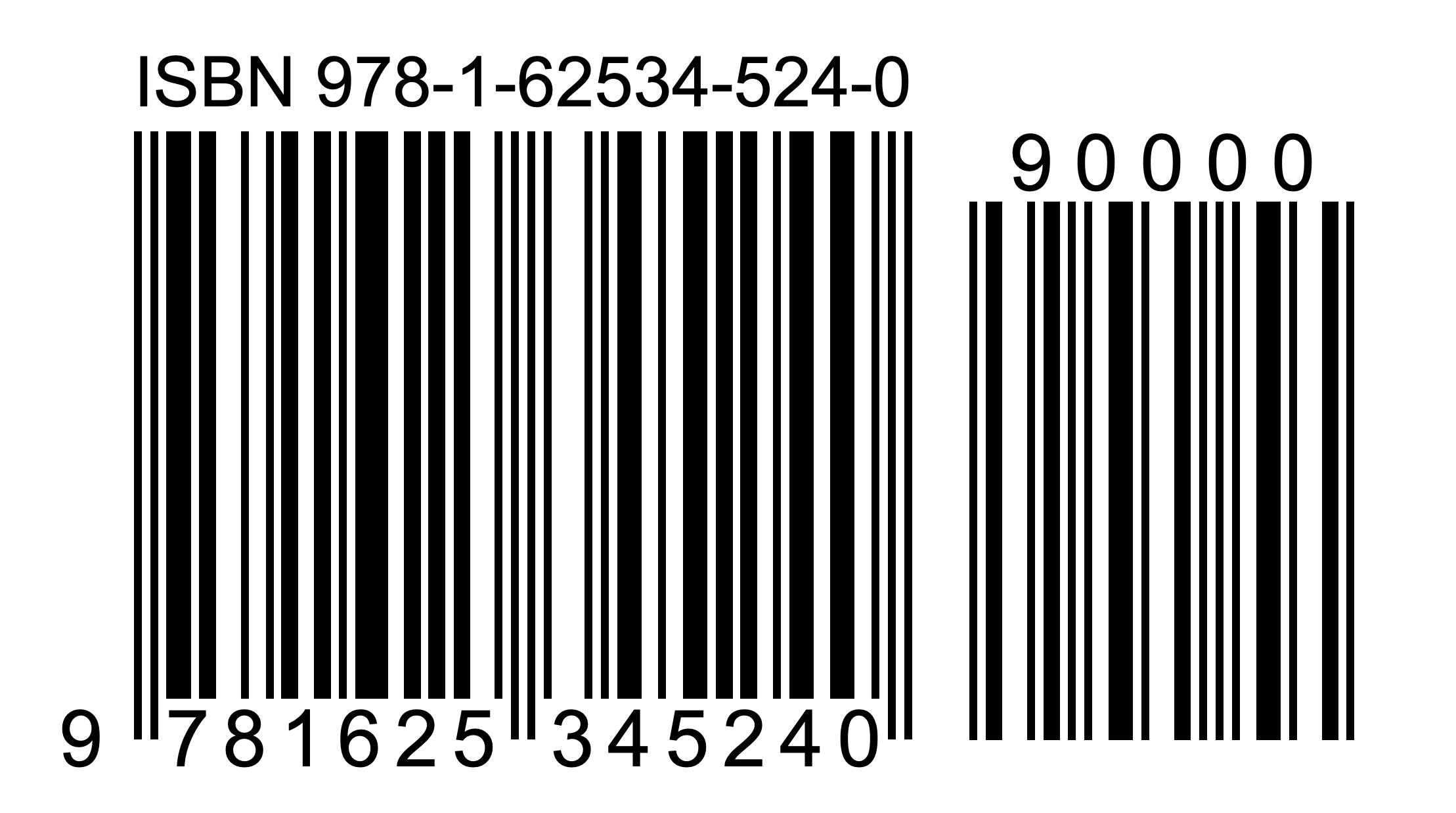
an economic history of child trafficking in nigeria




University of Massachusetts Press
Amherst and Boston
Copyright © 2021 by University of Massachusetts Press
All rights reserved
Printed in the United States of America
ISBN 978-1-62534-524-0 (paper); 523-3 (hardcover)
Designed by Deste Roosa
Set in Carta Marina and Adobe Caslon Pro
Printed and bound by Books International, Inc.
Cover design by Deste Roosa
Cover art by Deste Roosa, adapted from “Iron Collar and Chains Used by Slave Traders, early 19th cent.,” Slavery Images: A Visual Record of the African Slave Trade and Slave Life in the Early African Diaspora, accessed March 10, 2020, http://slaveryimages.org/s/slaveryimages/item/389 (CC BY-NC 4.0). Background image from Freepik.com.
Library of Congress Cataloging-in-Publication Data
A catalog record for this book is available from the Library of Congress.
British Library Cataloguing-in-Publication Data
A catalog record for this book is available from the British Library.
A portion of chapter 3 was published in a previous form as “Girl Pawns, Brides and Slaves: Child Trafficking in Southeastern Nigeria, 1920s” in Children on the Move in Africa: Past and Present Experiences of Migration, ed. Marie Rodet and Elodie Razy (Oxford: James Currey, 2016). Reprinted with permission.
For my children, Caleb and River, and for all the trafficked children whose stories we may never know
In December 1929 the New York Times reported the murder of fortythree Nigerian women. Colonial officers shot these women as they participated in the 1929 Ogu Umunwaanyi (the Women’s War) in Igboland located in Southeastern Nigeria.1 In the weeks following, it became evident that additional women had lost their lives or suffered injury. In the aftermath of the uprising, the British Colonial Office conducted the Aba Commission of Inquiry, during which dozens of men and women testified about what they believed had caused the Women’s War. The outcome of the inquiry suggested that women rioted because of the fallout from European colonization—the threat of taxation, decreased export profits for women’s commercial goods, increased import prices for daily essentials, along with growing dissatisfaction with their male Nigerian counterparts, mainly warrant chiefs and members of local native courts, whose abuses women could no longer bear.2
This book was born from my initial interest in the 1929 Women’s War after reading Judith Van Allen’s renowned article, “Sitting on a Man,” during graduate school. The article outlines the women’s grievances against British officers and Nigerian men and their subsequent physical and oral demonstrations through which they expressed their frustrations.3 Motivated by Van Allen’s critique, I read through the more than one thousand pages of inquiry testimony.4 When I found the mention of child pawning sprinkled throughout the testimony in relation to tax payments and moneylending arrangements, my interest in the women’s protest shifted to examining the use of children and their labor as vehicles for economic exchange. Thus, this book looks beyond the most commonly touted complaints as the reasons for the Southeastern women’s unrest by
domestic slavery. Ironically, Lugard, who had championed efforts to end child pawning, implemented policies under indirect rule that inadvertently ensured that numerous children would habitually end up as pawns and slaves. By the end of the 1920s, global attention to the use of child labor continued to grow alongside the concern of parents whose children had been pawned and subsequently enslaved. As a result, the colonial government would be confronted with an uprising among international humanitarians who insisted that child pawning and human trafficking, in any form, cease to exist.
The commission has undertaken to get the facts about the traffic in women and children as it exists to-day over the world.
William F. Snow, Chief of the Advisory Committee on the Traffic in Women and Children, 1926Concern about the trafficking of girls and women for the purpose of prostitution intensified during the 1920s. As expressed by William Snow, chairman of the Special Body of Experts focused on trafficking, his committee sought to identify instances of trafficking globally.1 As for Nigeria, these investigations into the trafficking of women and girls extended to all forms of child dealing in Southeastern Nigeria during the 1920s.2 This chapter explores how prostitution became a topic of global concern and how that concern resulted in additional investigations into all forms of child dealing in the colony. By carefully analyzing archival case studies and oral histories, I argue that inquiries into child trafficking and girl marriage produced a complex picture of legitimate marriage as well as instances of child dealing. The overlapping characteristics made it nearly impossible for British officials to determine the difference in many cases. To complicate matters, the demand to produce a marriage certificate to prove the legitimacy of a marriage had conflicting results. The following account is offered as an example of when two parties claiming to have engaged in a common
1930 at the Save the Children International conference in Geneva to discuss the fate of the African child. While at the conference, conveners discussed options for ending child labor and pawning practices in Africa, developing proposals that would charge colonial governments to take child welfare seriously.14 The continued pressure from this and other international groups spawned yet another investigation into the long-standing trade in children and slaves. It is noteworthy that evidence does not indicate any significant effort to include Nigerian women, or West African women in general, in organizations that focused on the trafficking of women and children in Africa during the 1930s. It seems reasonable to question whether efforts to end child trafficking would have been more effective had these groups insisted on the inclusion of African women. Thus, it is important to consider Jessica Cammaert’s suggestion, in her work on Ghanaian children and international humanitarian efforts during the colonial era, that calls for a reconsideration of who was “the best trustee” of African children.15
On the one hand, colonial authorities prioritized their economic agenda during an era when most of the world experienced a financial crisis. On the other hand, League members and other humanitarians focused on the very factor that had the potential to improve economies: unfree labor systems, which financially supported some Nigerian families and the British colonial state. In the 1932 Owerri Province annual report, Senior Resident O. W. Firth reported that: “In Okigwi Division there has been a considerable increase in the number of cases of slave-dealing and child-stealing. These crimes are particularly common in the Obowo area where there appears to be gangs who carry on a steady trade in stolen children.”16 With rising cases and constant pressure by League women, British representatives had little other choice but to acquiesce to their request.

In 1933, the Secretary for the Southern Provinces of Nigeria ordered a formal investigation into child stealing and slave dealing in the provinces of Owerri, Onitsha, Ogoja, and Calabar that lasted twentyseven months. British officials already knew that Igbo-speaking populations continued to engage in child trafficking, therefore the goal of the investigation was to develop a comprehensive understanding of child-dealing networks and their primary actors, in addition to identifying reasons why parents and child dealers pawned, stole, and sold children. In the cases that follow, it becomes evident that the frail economy, new forms of transportation, tendencies toward
that the child was going to work as a caregiver for the Aro man’s younger children.44 When challenged by authorities regarding the true nature of the exchange, the parents took the child home. Even though officials did not arrest the parents or the Aro man, they described the incident as an obvious slave-dealing case.45 In other incidents, Major Garden claimed that parents admitted to district officers and police that they established a written marriage agreement in order to avoid prosecution, but it is unlikely that parents would have explained how they avoided prosecution. Garden may have assumed this to be the case when parents argued that they had received payment for the child in the context of an arranged marriage. In any event, the existence of a tangible marriage contract complicated matters for those who sought to end child dealing.
Other child-dealing routes saw a variety of methods employed by traffickers throughout the southeast. When dealers transported children south to the Niger Delta creeks region, an adult usually traveled with the child by train from Uzuakoli to Umukoroshe (now called Rumukoroshe), near Port Harcourt. According to some reports, women often fulfilled this role of transporting children on foot to Okrika and other towns located along the creeks. If at any point authorities questioned a woman about the child in her care, she claimed to be the mother. If a man accompanied a “more fully grown girl,” he claimed to be her husband. In other instances, the Okigwe district officer claimed that child dealers took the children to the Aro capital at Arochukwu and sold them to plantation owners at Akpabuyo or Creek Town. Dealers also sold girls to brothels located along the coast.46
Major Garden produced a report listing all cases of child stealing and slave dealing brought to the attention of the court in December 1933 for the west-central part of Igboland. In all, the court reviewed the cases of sixteen boys and eighteen girls.47 It spanned the previous twenty-two months and showed the data presented in table 4.
Understanding that thirty-five child-stealing and slave-dealing cases might seem minimal, Major Garden warned that the “figures merely show the cases which have been before the Courts and cannot be taken to indicate that slave dealing is not being extensively carried on.” He explained that a large number of acquittals resulted from parents’ and relatives’ participation and the percentage of “not guilty” verdicts was “undoubtedly an incentive” for them to “carry on in the traffic.”48 His statement highlights the reality that colonial officers handled cases of child stealing differently when strangers stole and sold children versus when parents participated in the exchange of a child, because then prosecution proved too difficult.
The investigations into eastern Igboland unveiled its supply-and-demand needs as well as unique trafficking routes. The Ogoja Province had high demand for women and children’s agricultural labor since its population was lower than many of the other towns in Southeastern Nigeria.49 Numerous slaves came from throughout Igboland and from Bamenda, Cameroon. For instance, British officials did not believe
same historical moment. The movement of bodies and use of labor has always depended on immediate economic, social, and political circumstances, as well as the reiteration and application of force and control. It is only in this nuanced manner that we can truly understand the persistence of slavery as it relates to child trafficking in Southeastern Nigeria today.
1. “African Riot Toll,” 5.
2. Matera, Bastian, and Kent, Women’s War of 1929, 159, 164, 168.
3. Van Allen, “ ‘Sitting on a Man,’ ” 165–81.
4. Aba Commission of Inquiry, Notes of Evidence.
5. I. Tribal Customs and Superstitions of the Southern Province of Nigeria; II. Practice of Pawning Children as Security for Debts of Parents, and S. P. George, Slave Dealing and Child Stealing Investigation. “Child dealing” loosely refers to child pawning, stealing, selling, panyarring, and marriage.
6. Jeremy Slack, Daniel E. Martínez, and Prescott Vandervoet, “Methods of Violence: Researcher Safety and Adaptability in Times of Conflict,” in Slack, Martínez, and Whiteford, Shadow of the Wall, 63–71.
1. Rex v. Mbakwe of Avutu and three others, OkiDist 4/11/46.
2. Rex v. Mbakwe of Avutu and three others, OkiDist 4/11/58.
3. United Nations, Convention against Transnational Organized Crime, 43.
4. Elodie Razy and Marie Rodet, introduction to Razy and Rodet, Children on the Move, 3.
5. Grier, “Child Labor and Africanist Scholarship,” 3.
6. Dessy and Pallage, “Worst Forms of Child Labour,” 68.
7. Grier, “Child Labor and Africanist Scholarship,” 3.
8. Children’s Bureau, U.S. Department of Labor, “Child-Welfare News Summary.”
9. Sharp, African Child, 76–77.
10. “Republic of Liberia: Slavery Does Exist,” 10.
11. Sundiata, From Slaving to Neoslavery, 7; King, A Proclamation; Christy, Johnson, and Barclay, “1930 Enquiry Commission to Liberia,” 277–78.
12. DeMause, History of Childhood
13. Ariès, Centuries of Childhood
14. King, M. “Concepts of Childhood.”
15. Stearns, Growing Up, 5.
16. Graff, “Review.”
17. Ryan, “Social Study of Childhood,” and Fass and Mason, Childhood in America
18. Fass and Mason, Childhood in America, 2.
19. Heywood, History of Childhood; Stearns, Growing Up, 15; Cunningham, “Histories of Childhood.”
20. Nearing, Child Labor Problem, 1–6; quotation on 6.
21. Nardinelli, Child Labor and the Industrial Revolution.
Adelaja, Adesoji O., Abdullahi Labo, and Eva Penar. “Public Opinion on the Root Causes of Terrorism and Objectives of Terrorists: A Boko Haram Case Study.” Perspectives in Terrorism 12, no. 3 (June 2018): 35–49.
Aderinto, Saheed, ed. Children and Childhood in Colonial Nigerian Histories. New York: Palgrave Macmillan, 2015.
———. “Empire Day in Africa: Patriotic Colonial Childhood, Imperial Spectacle and Nationalism in Nigeria, 1905–1960.” Journal of Imperial and Commonwealth History 46, no. 4 (April 2018): 731–57.
———. “The Problem of Nigeria Is Slavery, Not White Slave Traffic.” Canadian Journal of African Studies 46, no. 1 (2012): 1–22.
———. When Sex Threatened the State: Illicit Sexuality, Nationalism, and Politics in Colonial Nigeria, 1900–1958. Champaign: University of Illinois Press, 2015.
Afigbo, A. E. The Abolition of the Slave Trade in Southeastern Nigeria, 1885–1950 Rochester, NY: University of Rochester Press, 2006.
———. “The Eclipse of the Aro Slaving Oligarchy of South-Eastern Nigeria, 1901–1927.” Journal of the Historical Society of Nigeria 6, no. 1 (December 1971): 3–24.
———. “Revolution and Reaction in Eastern Nigeria, 1900–1929: The Background to the Women’s Riot of 1929.” Journal of the Historical Society of Nigeria 3, no. 3 (December 1966): 539–57.
———. Ropes of Sand: Studies in Igbo History and Culture. Oxford: Oxford University Press, 1981.
———. The Warrant Chiefs: Indirect Rule in Southeastern Nigeria, 1891–1929. London: Longman Group Limited, 1972.
Africa and the Americas: Culture, Politics, and History; A Multidisciplinary Encyclopedia. Santa Barbara, CA: ABC-CLIO, 2008.
Page numbers in italics refer to figures
Aba, 32, 42, 90, 122, 168; child pawning in, 70–71, 74–76; child trafficking in, 69, 97–98, 151; warrant chiefs and, 56; Women’s War and, 119
Aba Commission of Inquiry, 108, 117, 120, 126–27, 185n38
Abaja (people), 124
Abakiliki, 151
abduction. See child stealing; kidnapping
Abeaku, Uche, 80
Abiriba (people), 30
abolition of slave trade, 13–14, 37–38, 44, 51
Abonnema (people), 147
Achara, 147
activists, 23, 81–85, 137–40. See also humanitarianism
Aderinto, Saheed, 9–10, 154–55 administration: British, 19–23; colonial, 15–16; native, 19–22. See also colonialism, British; Colonial Office
adoption, 156, 189n74; illegal, 168–69; inheritance and, 155; as taboo, 169
Afigbo, Adiele E., 30, 55, 112, 133, 137, 158, 174n7
Afikpo, 33, 65, 68, 142, 150–51
Agbagwu trade fair, 32
Agbaja, 183n55
Agbiam, 146
agency: of children, 2, 6, 90–91, 101, 104, 162; of women, 101, 138–39, 104
Agenda for Action, 166
agriculture, 10, 13, 22, 30; crop stealing, 125; labor needs, 49, 68, 97,
142, 176n44. See also palm oil industry; plantations
Agubaram, Chief Anthony Chibueze, 124
Agwa, 144
Ahoada, 49, 146–47
Ahudi of Nsidimo, 125
Ahuibe (child pawn), 49, 73
Akpabuyo, plantation at, 69, 148
Akpan, Ekwerre Otu, 112
Akuaghaji/Akuoyibo (kidnapped woman), 67
Akulechula of Obowo, 124
Akunakuna (Agwa’agune), 155
Akune (freed slave), 61
Akwukwaebu (slave dealer), 152
Ala/Ani, 95, 114, 184n20
Alazie, Awku (trafficked woman), 57
alcohol, 47, 89, 100
Allain, Jean, 12
Allman, Jean, 90
Amachara, 145–46
Amadiume, Ifi, 112
Amaigbo, 36 Amapu, 119
Amorji-Nike, 97
Anambra River, 33
Andoni, 71, 120
Anglo-French Convention of 1898, 19 Anna Pepple House (Bonny), 36
Anti-Slavery and Aborigines’ Protection Society (AS & APS), 37–40, 44–46 antislavery movements and activists, 11–14, 21–24, 50–51, 137–40
Anum, Obia Ogum (sex trafficker), 155 appeals, additional payments for, 54
Ariès, Philippe, 5
Despite efforts to abolish slavery throughout Africa in the nineteenth century, the coercive labor systems that constitute “modern slavery” have continued to the present day. To understand why, Robin Phylisia Chapdelaine explores child trafficking, pawning, and marriages in Nigeria’s Bight of Biafra, and the ways in which British colonial authorities and Igbo, Ibibio, Efik, and Ijaw populations mobilized children’s labor during the early twentieth century. Drawing on a wealth of primary sources that include oral interviews, British and Nigerian archival materials, newspaper holdings, and missionary and anthropological accounts, Chapdelaine argues that slavery’s endurance can only be understood when we fully examine “the social economy of a child”—the broader commercial, domestic, and reproductive contexts in which children are and become economic vehicles.
The Persistence of Slavery provides an invaluable investigation into the origins of modern slavery and early efforts to combat it, locating this practice in the political, social, and economic changes that occurred as a result of British colonialism and its lingering effects, which perpetuate child trafficking in Nigeria today.
“An important, original contribution to the history of child trafficking in the twentieth century, the history of children globally, and to Nigerian and West African history, in general.”
—Benjamin N. Lawrance, editor in chief of African Studies Review and author of Amistad’s Orphans: An Atlantic Story of Children, Slavery, and Smuggling
“One of the few book-length studies on the history of children in colonial Africa, The Persistence of Slavery is necessary and timely. It will be a first choice for courses on African history and childhood studies.”
—Saheed Aderinto, author of When Sex Threatened the State: Illicit Sexuality, Nationalism, and Politics in Colonial Nigeria, 1900–1958
robin phylisia chapdelaine is assistant professor of history at Duquesne University.
A volume in the series Childhoods: Interdisciplinary Perspectives on Children and Youth
Cover design by Deste Roosa
Cover art by Deste Roosa, adapted from “Iron Collar and Chains Used by Slave Traders, early 19th cent.,” Slavery Images: A Visual Record of the African Slave Trade and Slave Life in the Early African Diaspora, accessed March 10, 2020, http://slaveryimages.org/s/slaveryimages/item/389 (CC BY-NC 4.0). Background image from Freepik.com.



